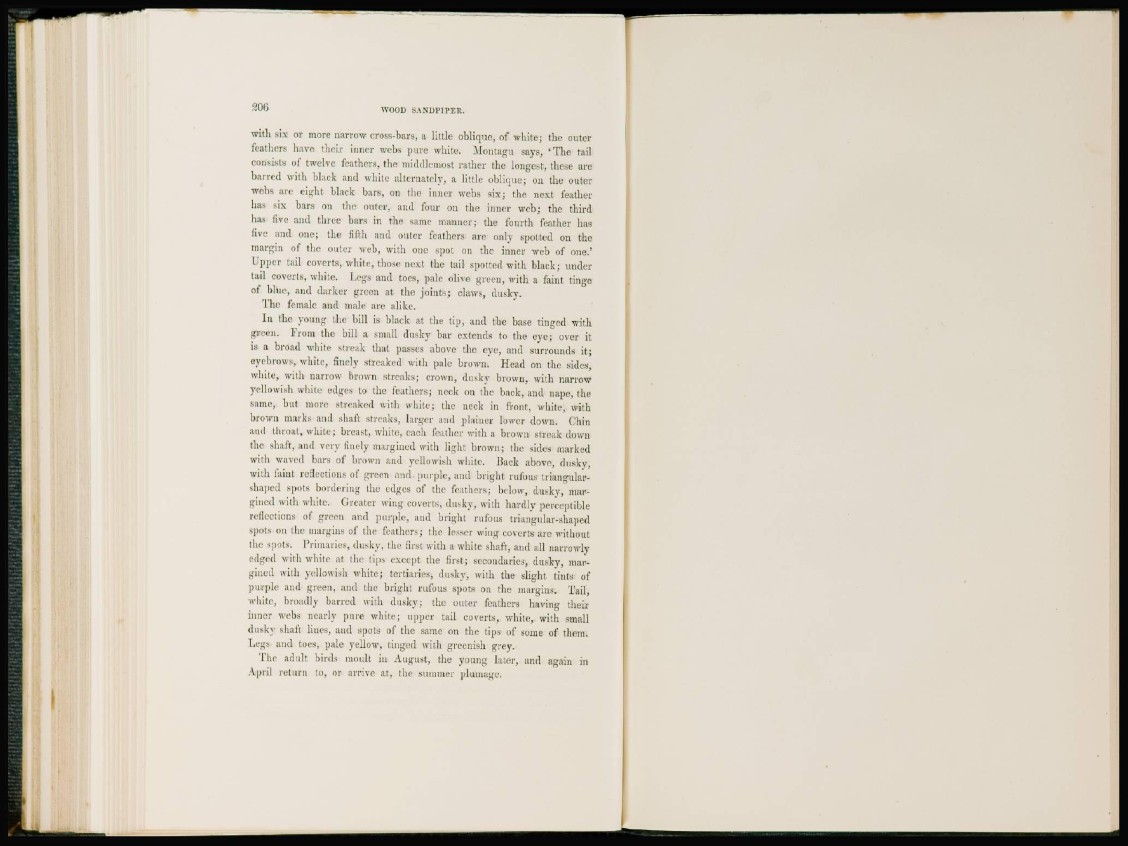
WOOD SANDPIPER.
with six or more narrow cross-bars, a little oblique, of white; the outer
feathers have their inner webs pure white. Montagu says, ' T h e tail
consists of twelve feathers, the middlemost rather the longest, these are
barred with black and white alternately, a little oblique; on the outer
webs are eight black bars, on the inner webs six; the next feather
has six bars on the outer, and four on the inner web; the third
has five and three bars in the same manner; the fourth feather has
five and one; the fifth and outer feathers are only spotted on the
margin of the outer web, with one spot on the inner web of one.'
Upper tail coverts, white, those next the tail spotted with black; under
tail coverts, white. Legs and toes, pale olive green, with a faint tinge
of blue, and darker green at the joints; claws, dusky.
The female and male are alike.
I n the young the bill is black at the tip, and the base tinged with
green. From the bill a small dusky bar extends to the eye; over it
is a broad white streak that passes above the eye, and surrounds it;
eyebrows, white, finely streaked with pale brown. Head on the sides,
white, with narrow brown streaks; crown, dusky brown, with narrow
yellowish white edge's to the feathers; neck on the back, and nape, the
same, but more streaked with white; the neck in front, white, with
brown marks and shaft streaks, larger and plainer lower down. Chin
and throat, white; breast, white, each feather with a brown streak down
the shaft, and very finely margined with light brown; the sides marked
with waved bars of brown and yellowish white. Hack above, dusky,
with faint reflections of green and purple, and bright rutbus triangularshaped
spots bordering the edges of the feathers; below, dusky, margined
with white, (neater wing coverts, dusky, with hardly perceptible
reflections of green and purple, and bright rufous triangular-shaped
spots on the margins of the feathers; the lesser wing coverts are without
the spota. Primaries, dusky, the first with a-white shaft, and all narrowly
edged with white at the tips except the first; secondaries, dusky, margined
with yellowish white; tertiaries, dusky, with the slight tints of
purple and green, and the bright rufous spots on the margins. Tail,
white, broadly barred with dusky; the outer feathers having their
inner webs nearly pure white; upper tail coverts, white, with small
duskv shaft lines, and spots of the same on the tips of some of them.
L e g s and toes, pale yellow, tinged with greenish grey.
The adult birds moult in August, the young later, and again in
April return to, or arrive at, the summer plumage.